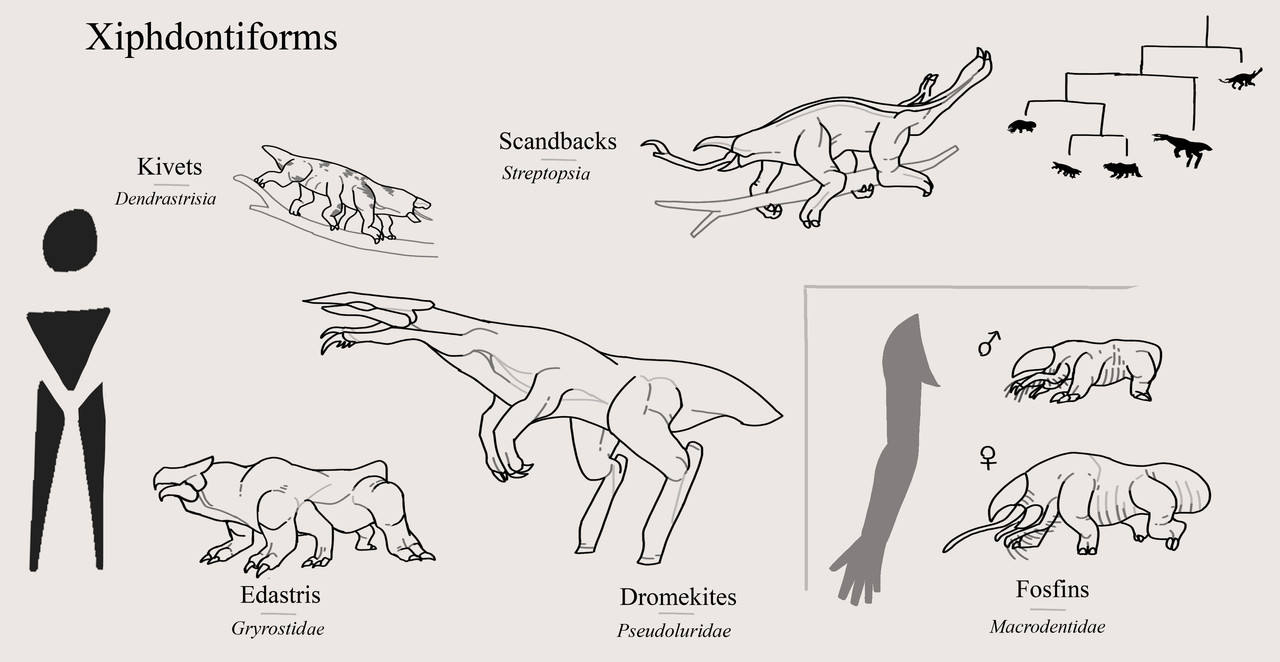HOME | DD
 GreenTurtleKing0 — Xiphdontiforms
GreenTurtleKing0 — Xiphdontiforms

#speculativeevolution #speculativebiology #speculativezoology
Published: 2021-11-22 00:58:26 +0000 UTC; Views: 2753; Favourites: 44; Downloads: 3
Redirect to original
Description
Old Xiphodontids* (Stracistomidae)
* Scandbacks (Streptopsia)
Carnidontids
* Dromekites (Pseudoluridae)
* Edastris (Gryrostridae)
* Kivets (Dendredastria) (Arboreal Edastri genus)
*Fosfins (Macrodentidae)
The Xiphdontids are an order of diverse medium and small omnivores. They are characterized by sharp beaks, and internalized feeding tentacles, which are connected to the underside of the mouth, often retractable. They can be separated into two categories.
The old Xiphdontids are the earliest forms of Xiphdontids, they are largely herbivorous.
The only old Xiphdontids family are the Stracistomidae. Most members of this family are long extinct. The only living genus are the Scandbacks, only surviving through isolation on Isla Eose.
The new Xiphdontids, or Carnidontids.
The Dromekites are a widespread group all across Euyria. Most species scavenge for carcasses or unattended eggs, but some species actively hunt coastal life and smaller herbivores. They have developed to be bipedal, using their first arms for tearing and impaling prey, and the second pair for grabbing and manipulation.
The Edastris are another widespread group on the mainland continents. They are low, adaptable omnivores, comparable to badgers. Many species are burrowing, but one other major genus are the Kivets. Kivets or “Tree Edastris” are arboreal predators inhabiting Euryias western rainforest. The Kivets most peculiar feature are their venomous feeding tentacle.
The Fosfins are a peculiar family, related to the Edastris they share similar behaviors. They are often fossorial. At first glance they appear like a genus of Edastri. However one major difference is their mating. Female Fosfins are bigger and have a grappling tentacle. They use this to hunt to feed themselves and their young. Males are much smaller and actually herbivorous. The males travel around the desert to find females, whereas the females stay in the same burrow for often their whole lives. Once a male finds a female he will mate and then die. The female will raise the young herself until they are ready to leave the burrow. (There are other species I want to give more social behaviors later)
I feel like making a website someday, where I will go in more detail

























